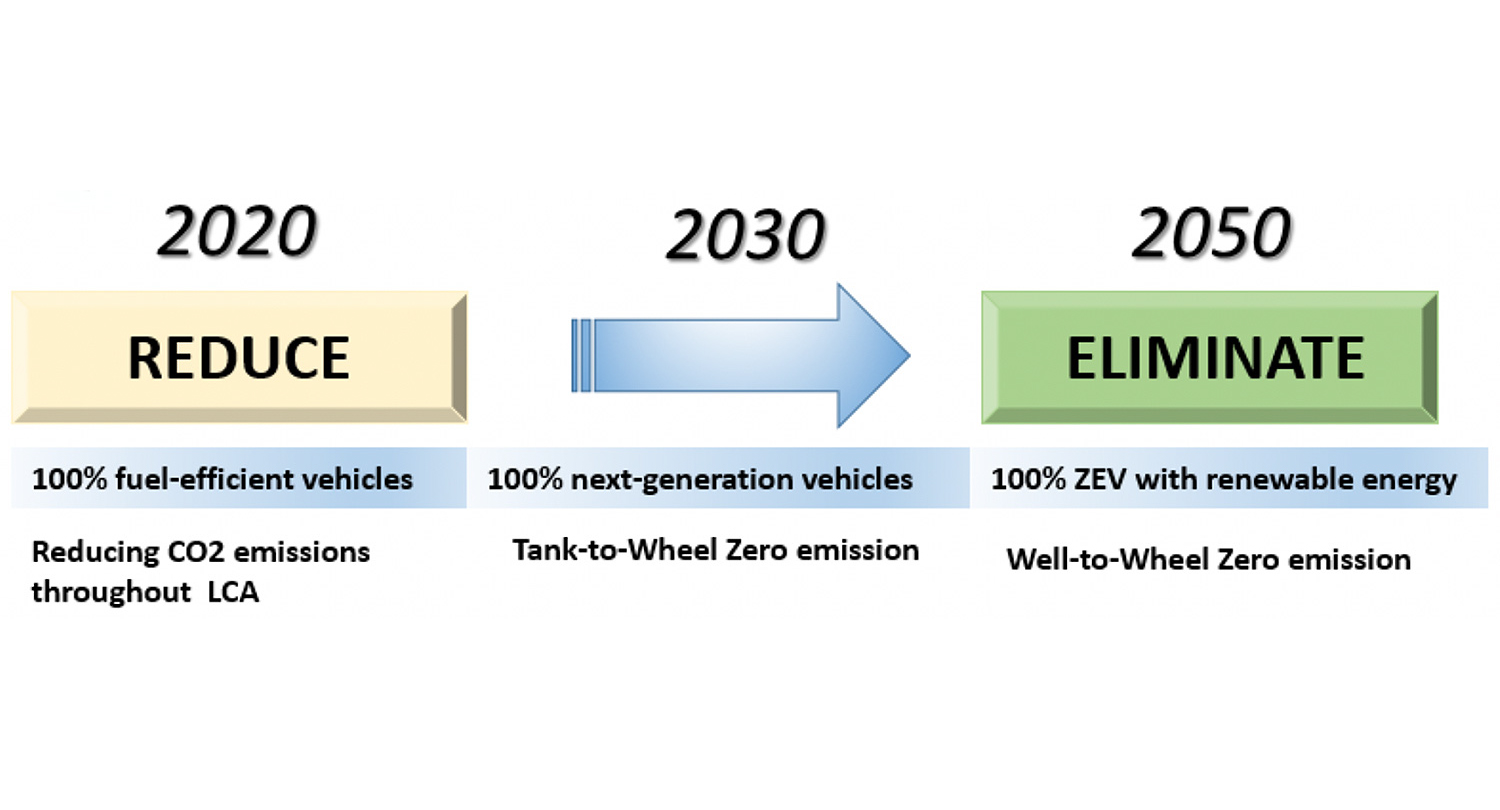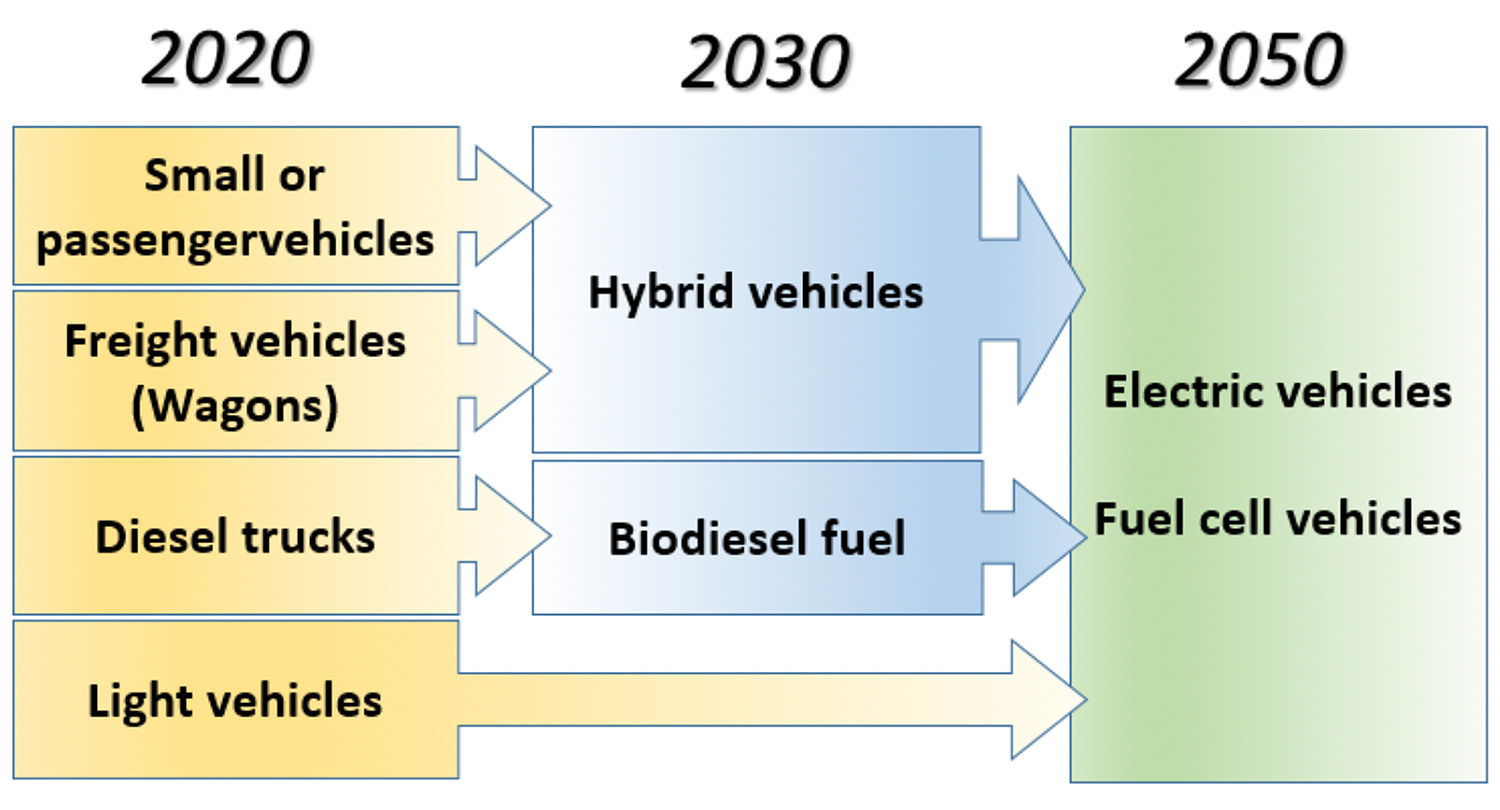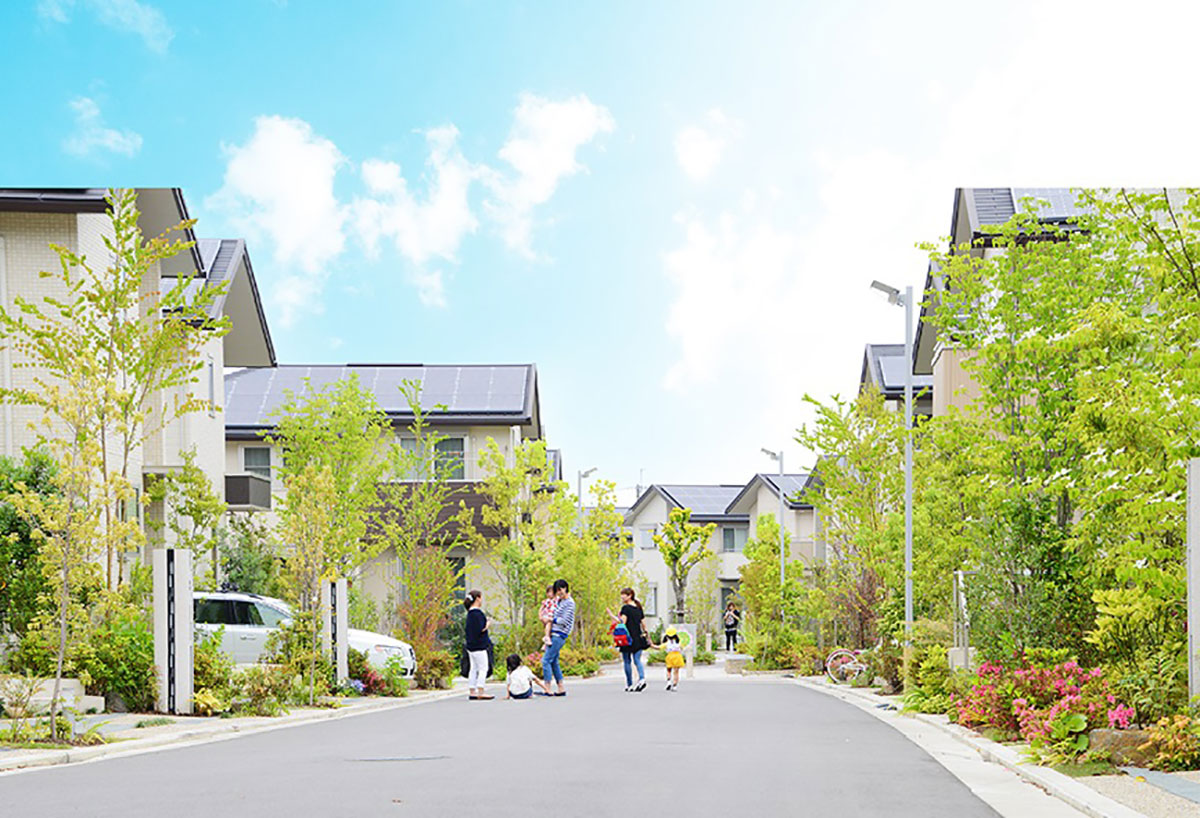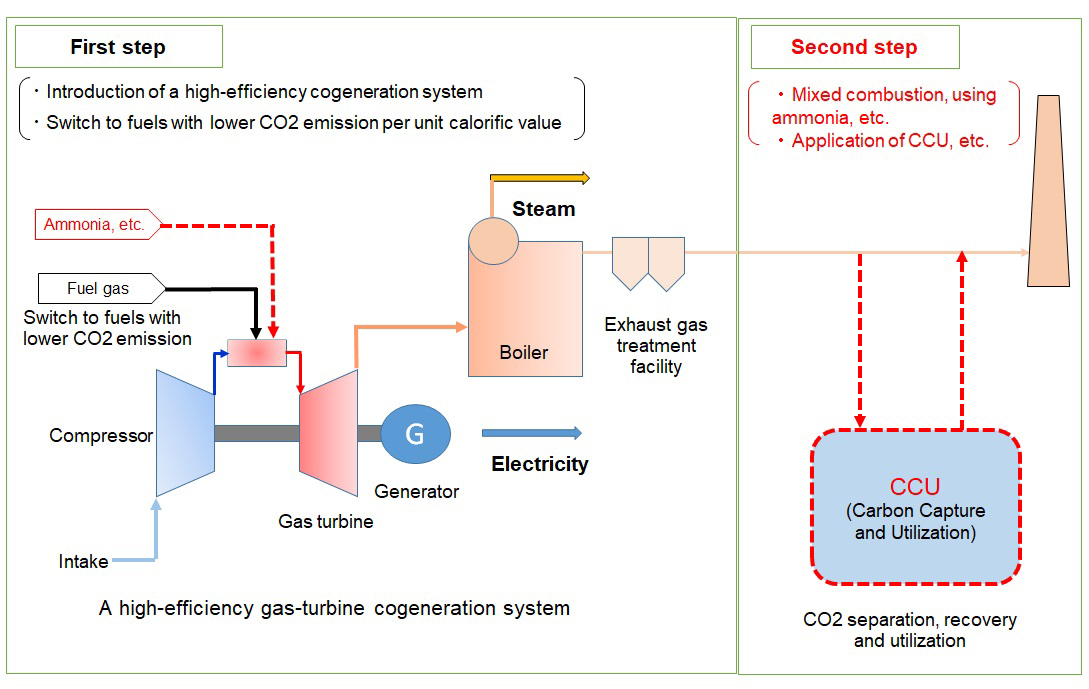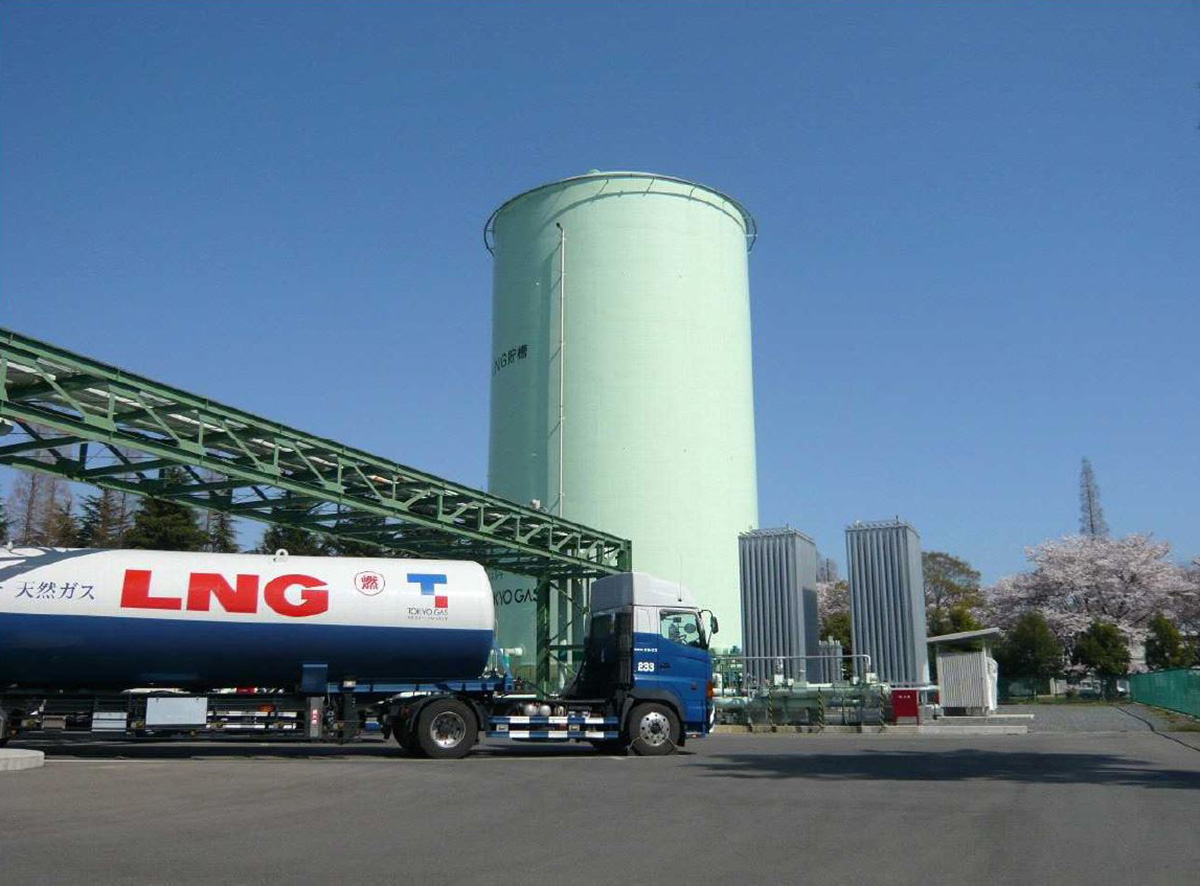"ZERO CHALLENGE" FOR VEHICLES
SECOM CO., LTD.
Outline
SECOM’s mission is to help achieve a society free from concerns, and we strive to continue delivering “safety and security” to society so that everyday life and business keep flowing despite various risks. Approximately 4,000 vehicles are operated daily, mainly in the security business, to assure the safety and security of more than 2.4 million customers throughout Japan, and approximately 50% of our CO2 (carbon dioxide) emissions are due to vehicle fuel. Therefore, viewing the reduction of CO2 emissions as a materiality in our activities, we have made special efforts to implement environmental measures for vehicles.
From 2020 onward, in an effort of minifying the use of vehicles and further promoting CO2 reduction, we will enhance the quality and efficiency of our services making use of advanced AI/IoT technology for remote monitoring. On top of that, we will challenge to achieve “Zero CO2 emissions from vehicles” by 2050 to realize a sustainable society.
Description
To accomplish the challenge of achieving the Zero CO2 emissions from vehicle by 2050, SECOM will take a two-step approach: the radically “reducing” step, and then the completely “eliminating” step. For the “reducing” step, we will first reduce distances traveled by vehicles, enhancing the technology of remote monitoring and promoting operational efficiency. Then we will take measures to replace all 4,000 vehicles to “Top runner vehicles” (next-generation vehicles). For the second “eliminating” step, we will challenge the “Well-to-Wheel” Zero emission for fuels, eliminating CO2 “from the oil field to the tire.”
1. Reducing total mileage by improving work efficiency
Advanced digital technologies such as the AI/IoT will enable us to collect more accurate and high-precision information from security sensors and cameras, improving the quality and efficiency of our remote monitoring services. Currently, SECOM provides 3-Dimensional surveillance services (outdoors), making use of autonomous surveillance drones with imaging technology, sensing technology, and AI technology. With even more accurate and precise imaging, sensing and tracking technology in the future, we can improve the efficiency of placement of security guards. This will result in greatly reducing the number of times vehicles are used, which also means reducing CO2 emissions from these vehicles.
Using advanced AI/IoT technologies will not only contribute to reducing CO2 emissions, but it will address the needs of a depopulating society, enabling to provide generous support with fewer personnel.
Remaining issue:
Outdoor surveillance services are easily affected by the weather, so it is necessary to develop equipment that are not easily affected by such outside environment, and to improve the accuracy of communication to an even higher level.
2. Selection of vehicles and electricity for “Zero challenge”
SECOM is actively replacing vehicles with “Top runner vehicles,” which are the most fuel-efficient vehicles with low gas emission at the time. We have constructed a unique management system to monitor the approximately 4,000 vehicles being used, enabling us to aggregate and assess the driving distance, refueling amount and consumption of each vehicle. When considering an alternative, the department in charge analyzes the data of each vehicle and classifies it according to characteristics such as usage, driving distance, installation of special equipment, etc. For example, in the case of a vehicle with short mileage, simply replacing it with a hybrid or electric vehicle will not result in reducing CO2 emissions in the total life cycle, considering the large amount of CO2 generated during the manufacturing process.
Carrying out this switchover in the years following 2020, we will also actively take in electric and fuel cell vehicles (Tank-to-Wheel Zero) and use carbon-neutral fuel to achieve the zero emissions (Well-to-Wheel Zero) goal.
The graphic below shows how the vehicles, grouped in four categories, will be replaced to implement our “zero challenge” towards 2050.
In addition, since electric and fuel cell vehicles carry large-capacity batteries, if we could allocate these vehicles at our branch offices nationwide, they would function as electric power sources in the event of a power failure. They would also make it possible for us to support the community during a disaster. We will move forward with the “zero challenge” for vehicles, while taking measures to improve business continuity in the event of a disaster.
Remaining issues:
- Charging the electric vehicles
Providing around-the-clock security systems, SECOM has a large number of vehicles that run on a constant basis. Therefore, in situations where there is difficulty in charging the vehicle at its own office, it is important to be able to quickly charge it at a plug-in station in the city, or to be able to replace the battery with a cartridge.
- Electricity used at plug-in stations
When charging the electric vehicles, using electric power derived from coal-fired generators will not result in zero CO2 emissions. It is necessary to be able to select electric power derived from renewable energy at plug-in stations in the city.
In order to solve the issues above, and implement the “Zero CO2 emissions” from vehicles, industries such as electric power companies, automobile manufacturers, gas stations, etc. are required to cooperate and make industry-wide standards and systemic arrangements so that electric and fuel cell vehicles gain wide use.
SECOM will actively lead such activities and work together with partners to realize a society where CO2 emissions from vehicles can be completely eliminated.
Similar Innovation Challenges
Achieve 2050 decarbonization target with Net Zero Energy House!
Sekisui House, Ltd.
Achieving net-zero emissions by promoting renewable energy use through both our monozukuri and products.
DAIWA HOUSE INDUSTRY CO., LTD.



